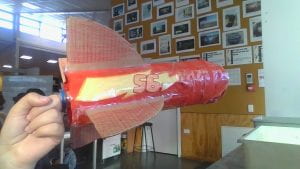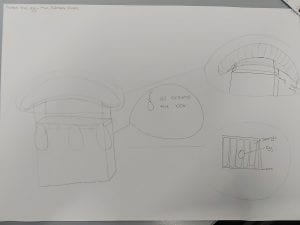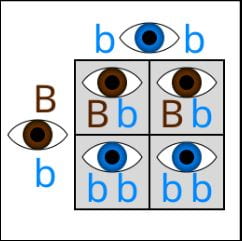Our Times: 1.87 – 2.34 – 2.09 – 2.47 – 1.80 – 2.10
Average time: 2.11
Distance: 29.10 meters
Speed: 13.79 meters per second


Aim: The purpose of the bottle rocket experiment was to observe the forces acting on an object and how they affected its flight path and acceleration. As well as speed.
Equipment: For this experiment, we didn’t need a lot of materials, as there were only 4 key materials needed for this experiment. However, that’s not including all the materials we wanted to use to make our rocket look its best and enhance its aerodynamics. So overall, we ended up using: – Red paper – Yellow paper – White paper – Card board – Coloured pens/pencils – Scissors
And for the actual launch process we used: – A 30 meter measuring tape – Stop watches – Water – Launch Station – Rubber cork – Air pump
Method: The method for this experiment was quite straightforward forward build the rocket, launch the rocket. But here’s a more detailed explanation. 1) First of all, we grabbed a bottle (our one was an old Pepsi bottle), then we planned the design around the aerodynamics and looks. We ended up choosing a design based on Lightning McQueen. To do this, we taped red paper around the bottle and added extras to make it look like him.
2) Next, we filled the bottle 1/3 of the way up with water before taking it outside to the launch station, ready to be launched.
3) To launch, we plugged the bottle with the rubber cork and attached the air pump to it before placing it on the launch station.
4) When we pumped the pump to make the air pressure release the plug 9 people had stopwatches ready to time the bottle to get a more accurate result.
Discussion: Forces: There were four different types of forces acting on our rocket during its flight they were lift, gravitational pull, push and drag. These forces would have been balanced at the peak of the rocket’s flight before gravity took over, making the forces unbalanced. These forces are slightly different for each bottle rocket depending on its shape and weight; They also change throughout the flight. For example, our rocket went in a straight line quite far, while someone else’s didn’t go very far and spiralled in the air. This is because their forces were unbalanced. This can all be defined under net force, which is the total amount of force acting on an object in a direction.
The change of forces: Forces change a lot during the flight of the rockets. First, the thrust force is the strongest because it’s just been launched, and the lift will also be quite strong as it’s travelling up very fast. Next, when the rocket reaches its peak height, the weight or gravitational pull is at its strongest, pulling it towards the ground. The friction is also very strong now as the rocket is slowing down. Finally, when the rocket lands or crash-lands in some cases, all the forces are equal as it’s not moving anymore.
Why were all the results different? All the results were different because of the way the rockets were designed. As all the aero-dynamics were different, the amount of water that was used to power the rocket could have also played a part in how far it went, as a less filled rocket wouldn’t have as much thrust as one with slightly more water.

Net forces: Net force is the amount of force acting upon an object in a direction. E.g. the net force for our rocket would be the upward thrust created from the water leaving the bottle creates an upwards net force, causing the rocket to accelerate upward.
Physics Concepts: Newton’s second law of motion can be linked to this experiment as it states ” Force = mass times acceleration / F=ma”. We have been using this law of motion to help us calculate speed, mass and acceleration of the rocket and other objects this term. Newtons first law of motion can also be linked to this experiment as it states “An object at rest stays at rest, and an object in motion stays in motion with the same speed and direction unless acted upon by an unbalanced force.” This can be seen in this experiment as the rocket stays at rest until the water is pressurized enough to launch it into the air. The water in this case is the unbalanced force.
Conclusion: At the end of every experiment, you can improve the prototype or the experiment in general. These improvements are important because everything can be made better and changed to get better results. And if we never improved anything, we would stay at the same place, and nothing would be modernised, and everything would be outdated and useless. But for experiments, if we never added improvements, we wouldn’t learn.






 specific trait, e.g., your hair or eye colour, as well as how tall or small you are. These traits can also be how we act/ our behaviours. We inherit these traits from our parents as they pass on their traits to us. Humans have 23 pairs of chromosomes that are passed onto us from our parents these chromosomes are passed on randomly however some traits/chromosomes are more likely to be passed on. We can determine which chromosomes are more likely to be passed by using punnet squares. Punnet squares are squares where the two parent alleles are on the top and side and the dominate allele will always be chosen over the resistive allele.
specific trait, e.g., your hair or eye colour, as well as how tall or small you are. These traits can also be how we act/ our behaviours. We inherit these traits from our parents as they pass on their traits to us. Humans have 23 pairs of chromosomes that are passed onto us from our parents these chromosomes are passed on randomly however some traits/chromosomes are more likely to be passed on. We can determine which chromosomes are more likely to be passed by using punnet squares. Punnet squares are squares where the two parent alleles are on the top and side and the dominate allele will always be chosen over the resistive allele.